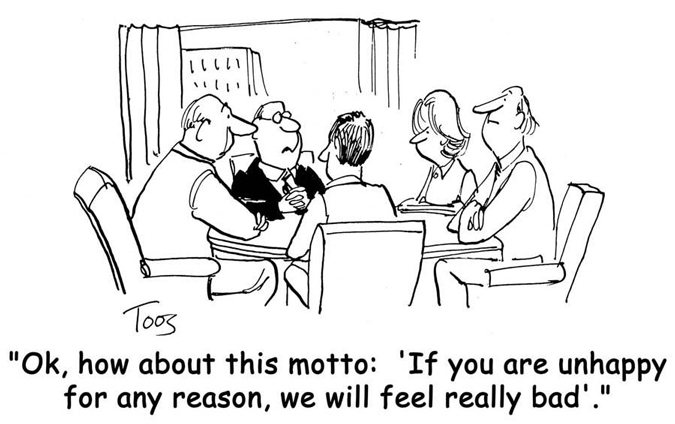Music is widely recognised as an effective teaching aid for young children but is often dismissed as a 'novelty' technique when talking about the development and training of adults. In fact, music is useful as an educational tool for all ages for a wide variety of reasons.
In this post I'm going to look at why music can be such a great method to help with training and give examples as to how you can integrate it into your sessions.

For maximum impact, music should be used alongside questioning techniques and even Neuro-Linguistic Programming techniques; both of which can be learnt on our Train the Trainer Course.
Mood Setting
Music is strangely powerful when it comes to creating a mood, for individuals and groups alike. With that in mind, you can use it to your advantage in training sessions. It's worth having a bank of varied music stored on your laptop or phone or a subscription to a music streaming service like Spotify (and don't forget external speakers!).
From invoking a sense of concentration with some Mozart or Bach (or whichever 'classical' composer works for you) to garnering some enthusiasm with some upbeat, even motivational music (Eye of the Tiger anyone?) - used in the right way it can make training sessions a more pleasant and balanced experience for everyone, especially if you have difficult delegates on the course.
Andy Trainer
21 Feb 2013
Minimalist movie posters have almost become an art form in themselves as a way for fans of the films to show their appreciation creatively. The best designs summarise everything you know about the movie while remaining simple and stylish.
With that in mind, we thought we'd take a look at some of the best minimalist posters of some of the best movies of all time, as judged on IMDb. (Attribution has been given where possible.)
If you'd like to be able to create iconic re-imaginings of movie posters like the ones below, come on our InDesign Training Course which will teach you all the skills you need.
So let's start with number 10...
10/ Fight Club by Pedro Vidotto

Movie posters don't get much more minimalist than this - a grey background, a bar of soap and exactly 6 words. This might be IMDb's 10th best movie but the poster would be challenging for top spot in this list!
Aaron Charlie
18 Feb 2013
We recently wrote about an American man who used Six Sigma to control his diabetes. It went to show that Six Sigma is gradually being recognised as a system that can be used beyond the workplace and especially for more than just manufacturing.
Six Sigma is all about improving the quality of processes and thereby the end result. Now if you've ever burnt your dinner or tried out a new recipe that has not quite ended up how you expected, you'll know that cooking is an area in which quality can always be improved!
In this post then, we're going to look at one of the main tenets of Six Sigma: the DMAIC method and see how it could be applied to kitchen to show how useful it is as process and demonstrate how it works.
If you prefer your Six Sigma with a side of business, take a look at our range of Six Sigma Courses - there's one for any level of experience.

DMAIC in the Kitchen
So let's say you've got a classic go-to meal that you just love cooking; I'll use my own example of chilli con carne.
Andy Trainer
14 Feb 2013
Google Executive Chairman Eric Schmidt has been in the news a lot recently. Firstly he has a new book coming out, “The Digital Age”, from which The Wall Street Journal “leaked” the following quote:
Secondly, he’s announced that he is about to sell 42% of his Google stock (worth more than $2.5 billion). As with any story about Google, the conspiracy theorists have come out in force to guess at what these two moves mean. |
 |
Marketing blog The Drum claimed that Schmidt’s verification quote is ‘confirmation’ that Google+ is to become a ‘search priority’ in future and that this is part of Google’s on-going battle with other social networks.
They've made the assumption that what Schmidt calls verification is the same as Google verification. With Google products you can verify yourself as an author, a publisher, a business, a place.
It didn't take long for certain SEO blog commenters to connect this to Schmidt’s stock sale, believing that the move towards ‘Google verification’ will force businesses to buy more ads, increasing the value of said stock.
Of course, as SEOs it is always important to listen to Google employees, especially those at the top. As one of the top dogs at Google, Schmidt’s personal views are always going to trickle down to those below him. The first piece of advice on our SEO courses is to go and read everything that Google has published about SEO!
But what does Schmidt mean Google+ when he uses the term ‘verified’?
Craig Charley
13 Feb 2013
Within the Directing a Project (DP) stage of PRINCE2®, authorising a project is a particularly important process.
Without it, the next stage plan cannot be approved which means that the project cannot proceed.
In this post we'll take a look in more detail at why it is a necessary process, who is responsible for each aspect and how it should be carried out.
If you'd like to find out more about PRINCE2 processes like authorising a project, try our PRINCE2 Courses.
Why is it Needed?
By using this process it means that the project board can make sure that there is:
- An acceptable Business Case in place (read 'What is a Business Case?' for more details)
- The goals and methods of the project match that of the corporate strategy
- An acceptable set of tolerances (and scope) has been set
- Risks are accepted and outlined fully
- The right controls have been set

Andy Trainer
4 Feb 2013
How many times have you heard your customer complain that the product you have delivered doesn't meet their expectations?
This is as a result of not addressing their expectations early enough in the project to get it right. You can learn how to do this with 5-day PRINCE2 Practitioner Training.
But customers also bring problems too! They often don’t seem to know what they want.
It is your job as a project manager to work with your customer to establish their quality expectations and then to create some measurable criteria against which you can deliver something fit for purpose.

Where Do We Start?
At the beginning... of the project.
During the early stages of the project – Starting Up – you should be talking to your customer about the solution:
- What they hope it will do
- How it will work
- What it will look like
These initial expectations will be little vague and may require some prompting and input from you to gain clarity around what the expectations mean.
Andy Trainer
31 Jan 2013
With Microsoft Office 2013 set for release very soon (and after our look at the new mobile excel apps), we thought we'd take a look at some of the new features to be added to its Access software.
The database powerhouse has undergone an overhaul and not just aesthetically. More app-focused, easily shareable and with a revised back-end, Access 2013 is set to build and develop upon the now three year old incumbent, Access 2010.
If you'd like to learn how to use Access from scratch, come on our Beginner's Access Training Course or if you have some experience but would like to brush up on your skills, try our 1 day Advanced Access Workshop.
So what exactly is different about Access 2013 compared to previous versions? And will these differences make the user experience better or worse?

App-Based
The biggest new feature to be brought in with Access 2013 is the focus on a more app-based system.
What with the introduction of Windows 8 and Sharepoint's development into a realistic competitor to Google Drive and Dropbox, it's unsurprising that Access 2013 has such a focus.
In Access 2013 you'll be able to create an app (which can effectively be anything, but we'll assume an Access file!), upload it to Sharepoint and then allow access to anyone you like.
No extra login details are required; just those of the business'/users' Sharepoint account.
Andy Trainer
29 Jan 2013
|
t's certainly the case that to really succeed in Project Management you need to have a solid technical knowledge and be able to use the tools and services available to you effectively. These Hard Skills of the sort you can learn on our Project Management training courses are vital because without them a Project Manager cannot really guide their team nor fully understand the details of the project. However, what makes a truly great Project Manager is the ability to balance these technical hard skills with interpersonal, or soft, skills. Soft skills needed for Project Management are often difficult to nail down, with no real definitive answer as to what is required and what is desired. |
Here's what we think are the 4 essential Project Management soft skills:

1/ Communication
So many issues arise during projects due to bad communication. This may be the Project Manager misunderstanding the requirements of the Project Board or team members not being given clear instructions.
Make sure you have the ability to both listen and explain. Listening really means active listening; not assuming based on past experience or pretending to accept their way while secretly planning to continue with your own methods.
Simple words at first and then more detailed points go along way when trying to explain a course of action or reason for one to team members. Nip any misunderstandings in the bud by asking for feedback. Get them to offer any problems they see or clarifications they require, upon explanation rather than days or weeks later, when some damage may have already been done.
Andy Trainer
17 Jan 2013